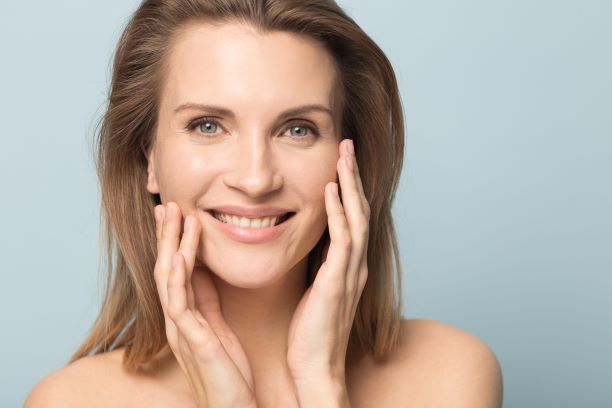Fotona Micropeel Laser 101 with Dr. Austin Cope – Everything You Need to Know

At Skin Spectrum in Tucson, Dr. Austin Cope and our team of board-certified dermatologists and healthcare professionals proudly offer a wide array of dermatologic services to help patients get healthier skin that looks and feels great. One of the many state-of-the-art technologies we use regularly is the Fotona micropeel laser. As our resident expert in Fotona skin tightening and laser resurfacing treatments, Dr. Cope has taken some time in this blog to answer some of the questions we hear most frequently from curious patients about this treatment option.
What is the Fotona Micropeel Laser?
The Fotona micropeel laser is an innovative tool that allows your dermatologist to improve the appearance of fine lines and wrinkles, as well as skin texture and tone. There are other treatments that address similar concerns, but according to Dr. Cope, Fotona has some unique characteristics that make it stand out compared with other solutions. Specifically, Dr. Cope said, “The Fotona micropeel is a fractionated superficial ablative erbium laser. Simply, it is a very light version of stronger ablative lasers used in dermatologic treatments, like CO2. The major benefit is the significantly shorter downtime after Fotona treatment.”
What Does the Fotona Micropeel Laser Do?
In order to improve the tone and elasticity of sagging skin, Dr. Cope says, “The Fotona micropeel laser removes a percentage of the superficial skin, usually between 30 and 50%, in a fractionated pattern. As a result, you get an improvement of superficial pigmentation (sunspots), diminished fine lines and wrinkles, smoother overall skin tone and texture, and decreased skin laxity.” In short, Fotona is an extremely versatile technology, and many people may be candidates for treatments that take advantage of this innovative laser dermatology tool. Some of the dermatologic uses for quick, comfortable Fotona laser therapy include:
- Anti-aging – remove sunspots, reduce fine lines, and decrease wrinkles
- Cosmetic – create a generally smoother and more even skin tone
- Skin laxity – tone and smooth the appearance of sagging or creased skin
Pre-Treatment Care Instructions?
Before we recommend a treatment for any patient, we’ll schedule a consultation visit, so we can discuss your desired results and whether or not a specific dermatology service is the best way to help you achieve your goals. During your Fotona consultation visit, we’ll discuss any medications or health concerns that may add an increased risk to a Fotona treatment session. If we decide together that Fotona is the best technology to help you achieve your desired results, you’ll receive specific pre-treatment instructions. Some basic care tips we recommend for everyone before receiving treatment include:
- Prep skin with topical retinol and pigment correction (hydroquinone)
- Avoid sun exposure and forego tanning
- Adjust medication and/or receive preapproval from your general physician
In some cases, we’ll also recommend combining your Fotona micropeel procedure with complementing treatments in the same session. In addition to Fotona laser therapy, you may consider injectables like neurotoxins (Botox and Kybella) or dermal fillers (Juvederm and Restylane) to improve the appearance of fine lines and wrinkles. We can discuss these additional treatment options during your consultation, so if you’re interested in these services, don’t hesitate to ask.
What Should I Expect During Fotona Micropeel Treatment?
On the day of treatment, your dermatologist will gently move the laser hand tool over the surface of your skin releasing pulses of energy in targeted areas. There may be minimal discomfort, but it is generally very tolerable, especially when topical numbing cream is used. Your Fotona session will take between 15 and 45 minutes, depending on the size of the treatment area. According to Dr. Cope, “Each person’s Fotona plan is different, but for optimal results, we generally recommend a series of laser treatments, spaced four weeks apart.”
Post-Treatment Care Instructions?
After your treatment session, you will basically look and feel like you have a bad sunburn for a couple of days, then maybe some peeling. The dermatologist will provide you with a set of after-care instructions to ensure you maximize the efficacy of your treatment investment. Each person’s situation will differ, but Dr. Cope typically recommends the following post-treatment care steps, “One to two days of aggressive topical emollient treatments with products like Aquaphor or Alastin will help to maintain the skin barrier and facilitate optimal healing. Sun avoidance is critical in the first five days. You should not exercise and minimize contact with animals for the first three days. Finally, you should sleep with your head elevated for the first three to five days.”
Are there Side Effects?
There may be some mild side effects following Fotona treatment sessions, but these should resolve themselves very quickly. According to Dr. Cope, “Some patients can develop skin irritation after a laser treatment. This is similar to an urticarial (hive-like) reaction. It causes increased swelling, redness, and itch to the treated areas. A high-dose antihistamine is recommended for these types of reactions, and it generally helps to calm them down.” If you experience severe side effects, pain, or any symptoms that do not improve within a week of your Fotona session, you should call our team as we may need to provide additional treatment.
How do I Learn More about Fotona Micropeel Laser Treatment?
If you’re interested in learning more about Fotona micropeel laser treatment sessions or any of the other extensive range of dermatologic services available from Dr. Cope and the team at Skin Spectrum in Tucson, please don’t hesitate to reach out. For your convenience, you can simply use our online appointment request form to get started scheduling a consultation with our trusted dermatologists. Once we receive the completed form, one of our team members will reach out to you soon to answer any questions you have and find a time to schedule your consultation visit.
